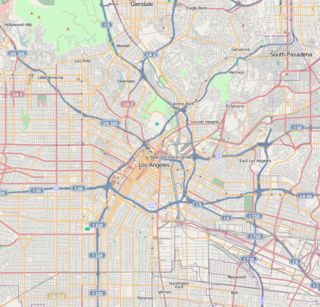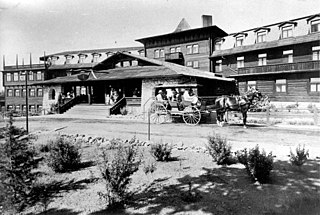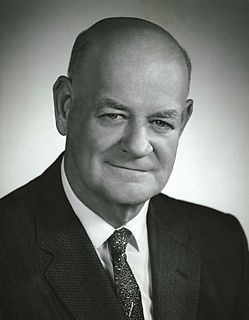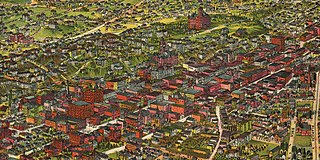
Lake Arrowhead is an unincorporated community and a census-designated place (CDP) in the San Bernardino Mountains of San Bernardino County, California, surrounded by the San Bernardino National Forest, and surrounding the eponymous Lake Arrowhead Reservoir. Lake Arrowhead consists of 6 communities including Lake Arrowhead, Twin Peaks, Blue Jay, Cedar Glen, Skyforest, and Rimforest. The population of the CDP was estimated at 12,424 in the 2010 census. It was formerly called "Little Bear Lake", until around 1920, when a group from Los Angeles, the Arrowhead Lake Company, bought the lake and the land surrounding it, and changed its name to Arrowhead Lake.

The Pellissier Building and adjoining Wiltern Theatre is a 12-story, 155-foot (47 m) Art Deco landmark at the corner of Wilshire Boulevard and Western Avenue in Los Angeles, California. The entire complex is commonly referred to as the Wiltern Center. Clad in a blue-green glazed architectural terra-cotta tile and situated diagonal to the street corner, the complex is considered one of the finest examples of Art Deco architecture in the United States. The Wiltern building is owned privately, and the Wiltern Theatre is operated by Live Nation's Los Angeles division.

Broadway, until 1890 Fort Street, is a thoroughfare in Los Angeles County, California, USA. The portion of Broadway from 3rd to 9th streets in the Historic Core of Downtown Los Angeles, was the city's main commercial street from the 1910s until World War II, and is the location of the Broadway Theater and Commercial District, the first and largest historic theater district listed on the National Register of Historic Places (NRHP). With twelve movie palaces located along a six-block stretch of Broadway, it is the only large concentration of movie palaces left in the United States.

George Edwin Bergstrom was an American architect who designed The Pentagon in Arlington County, Virginia.

William James Dodd (1862–1930) was an American architect and designer who worked mainly in Louisville, Kentucky from 1886 through the end of 1912 and in Los Angeles, California from early 1913 until his death. Dodd rose from the so-called First Chicago School of architecture, though of greater influence for his mature designs was the classical aesthetic of the Beaux-Arts style ascendant after the Chicago World's Columbian Exposition of 1893. His design work also included functional and decorative architectural glass and ceramics, furniture, home appliances, and literary illustration.

The Million Dollar Theatre at 307 S. Broadway in Downtown Los Angeles is one of the first movie palaces built in the United States. It opened in 1917 with the premiere of William S. Hart's The Silent Man. It's the northernmost of the collection of historical movie palaces in the Broadway Theater District and stands directly across from the landmark Bradbury Building. The theater is listed in the National Register of Historic Places.

Lucile Lloyd, also known as Lucile Lloyd Brown, Lucila Lloyd Nulty was an American muralist, illustrator, and decorative painter. In 1937, Lloyd worked with the Works Progress Administration's Federal Arts Project to paint three murals in the assembly room in the state building in Los Angeles, California.

The Broadway Theater District in the Historic Core of Downtown Los Angeles is the first and largest historic theater district listed on the National Register of Historic Places (NRHP). With twelve movie palaces located along a six-block stretch of Broadway, it is the only large concentration of movie palaces left in the United States. The same six-block stretch of Broadway, and an adjacent section of Seventh Street, was also the city's retail hub for the first half of the twentieth century, lined with large and small department stores and specialty stores.
Albert Carey Martin was an American architect and engineer. He founded the architectural firm of Albert C. Martin & Associates, now known as A.C. Martin Partners, and designed some of Southern California's landmark buildings. Martin is also credited with developing a system of reinforced concrete construction, along with reinforced brick masonry.
Meyer & Holler was an architecture firm based in Los Angeles, California, noted for its opulent commercial buildings and movie theatres, including Grauman’s Chinese and Egyptian theatres, built during the 1920s. Meyer & Holler was also known as The Milwaukee Building Company.
Henry F. Starbuck was an American architect and a specialist in church architecture.

Walker & Eisen (1919−1941) was an architectural partnership of architects Albert R. Walker and Percy A. Eisen in Los Angeles, California.

Charles Frederick Whittlesey (1867–1941) was an American architect best known for his work in the American southwest, and for pioneering work in reinforced concrete in California.
Thornton Fitzhugh (1864–1933) was an American architect. Among his major works are the Beaux Arts and Romanesque Pacific Electric Building in downtown Los Angeles, California, and a number others which are listed on the U.S. National Register of Historic Places.
Silas Reese Burns (1855–1940) was an American architect.

William Douglas Lee was an American architect and designer in the early 20th century whose career focused on designing large Neoclassic, Gothic Revival, Renaissance Revival, and Beaux-Arts style manufacturing buildings in Downtown Los Angeles, as well as other historically notable works such as the Chateau Marmont and the El Royale apartments.

M. Eugene Durfee (1885-1941) was an American architect prominent in Orange County, California.

The late-Victorian-era Downtown of Los Angeles grew year by year, around 1880 centered at the southern end of the Los Angeles Plaza area, and over the next two decades, extending south and west along Main Street, Spring Street, and Broadway towards Third Street. Most of the 19th-century buildings no longer exist, surviving only in the Plaza area or south of Second Street. The rest were demolished to make way for the Civic Center district with City Hall, numerous courthouses, and other municipal, county, state and federal buildings, and Times Mirror Square. This article covers that area, between the Plaza, 3rd St., Los Angeles St., and Broadway, during the period 1880 through the period of demolition (1920s–1950s).
Clarence Justin Smale, also known as C.J. Smale, was an American architect.
Henry Anthony Minton Sr. was an American architect based in San Francisco who designed a number of buildings, primarily in the San Francisco Bay Area.














